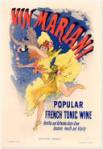
Diddle, diddle, dumpling, my son John
Today’s rhyme goes, “diddle, diddle, dumpling, my son John,/ went to bed with his trousers on/ one shoe off, the other shoe on/diddle, diddle, dumpling, my son John”. At first glance this is a rather inconsequential rhyme, describing the rather disorderly attempt by the child John to get himself to bed. Not only has he kept his trousers on but has clambered into bed wearing one of his two shoes. No doubt this is not an unfamiliar state of affairs when small children seize the initiative and try to do things for themselves.
But the key to unlocking what meaning there is to the rhyme is to understand the meaning of the word diddle. One of the many joys of being a grandparent is to watch the little one take their first tentative steps. BoJ2 is just about to start on his bipedal journey with all the bumps and scrapes that that will entail. And the Oxford English Dictionary (OED) gives a definition of diddle, albeit an obsolete usage, as “to walk unsteadily, as a child; to toddle = daddle”. It was certainly used in 1632 in this sense, “and when his forward strength began to bloom/ to see him diddle up and down the room”.
Somewhere along the line by the turn of the 19th century diddle had developed another meaning, to cheat or swindle. Quite how that came about is unclear but, perhaps, the tentative steps of a toddler were seen as an ersatz form of walking. In 1825 diddle was used in a context which was suggestive of wasting time and in 1879 was used to describe the act of sex. There is little doubt that the rhyme requires the original, now obsolete, meaning of diddle.
In these more politically correct times it is rather frowned upon to make explicit reference to some of the physical characteristics of a person but when the rhyme was first published, in The Newest Christmas Box of 1797, there were no such sensibilities. The OED provides us with a clue again, defining the word as “a dumpy animal or person, short and of rounded outlines”. In 1828 it was defined as “a little fat child or person, as broad as long”. Of course, babies and toddlers tend to be on the chubby side and we can perhaps view the usage in the rhyme as a term of endearment rather than pejorative.
There are variants to the rhyme. A version published in Denslow’s Mother Goose has the opening as “deedle, deedle, dumpling” and the 1916 The Real Mother Goose replaces trousers with breeches and shoes with stockings. The 1850 version of the rhyme, published in Harry’s Ladder To Learning, has breeches and shoes while a Scottish version, published in 1904 in A Book for Bairns, has trowsers and the rhyme starting, “hey diddle dumplin’”.
It has been suggested that the genesis of the rhyme came from the cry of one of the many street vendors who wandered the streets advertising their wares, “diddle, diddle, diddle dumpling”. That may be so but other than the obvious alliteration there is nothing in the sense of diddle to support such a claim. When we looked at hey diddle diddle, though, there was a suggestion that it referred to a dance. All very confusing!






